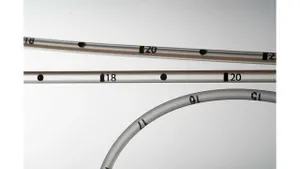Resin Price Report: Relative Stability Expected Through End of Year
An emerging need for domestic restocking, however, could fuel price hikes come January, according to the PlasticsExchange.
November 16, 2022

Resin trading was marked by mismatched availability and price expectations last week. Prime railcars were largely available across the full slate of commodity polyethylene (PE) and polypropylene (PP) grades, but this was not necessarily the case for packaged material ready to go, according to the PlasticsExchange.
The flow of off-grade railcars was on the light side and low-density (LD) PE film grades as well as co-polymer (Co) PP material were notably lacking. In these cases, prime railcars were available, but not near the prices that off-grade buyers were seeking. Prime PE and PP remained steady in the PlasticsExchange marketplace, although overall consolidation continued. Sale prices trimmed to those processors that had been paying large premiums, while the low end of the spectrum firmed further as off-grade prices moved another one to two cents per pound higher amid tightening supplies. Export interest remained strong, helped somewhat by an easing in the exchange rate of the dollar, reports the PlasticsExchange in its Market Update.
Resin storage costs causing headaches
Relatively high resin inventory remains an issue for producers, as they continue clearing out product while simultaneously looking for alternative storage options. Houston warehouses are packed with resin. Although much of it has been pre-sold into the export market and is awaiting shipment, producers remain under pressure as storage rates increase and the end-of-year inventory tax deadline approaches. One producer has gone so far as to announce a railcar detention charge of $150/day if railcars are not released back after 45 days. The penalty will increase to $250/day after 90 days. The detention charge announcement comes alongside ongoing congestion in the rail industry, which continues to face a possible rail worker strike in December if unions and railroads cannot agree on a new labor contract.
PE trading may have slowed but the market remained more active than during the third quarter, and prices again averaged out steady this week. The volume of Prime railcars offers has decreased and asking prices have held firm, as producers reject low-ball bids and discounts since ratcheting down operating rates and reducing inventory levels. The stable market further reflects the well-established floor that has been developing in most grades for more than a month now, with lower volume commodity grades like LDPE and linear-low-density (LLD) PE Injection grades flat for even longer.
Price increase nominations unlikey to succeed
In the meantime, price increases of as much as $0.07/lb are nominated for November contracts, according to the PlasticsExchange. Producers hope to build on their successful October rollover and capitalize on tighter supply/demand dynamics. The PlasticsExchange holds the belief that it is still too early for an increase, and November or December implementations are rare. However, the Chicago-based resin clearinghouse adds that it sees an emerging need for domestic restocking and feels that the market could be ripe come January.
Per American Chemistry Council (ACC) preliminary results, PE producers maintained production discipline in October and were able to further reduce their collective inventory levels by more than 100 million pounds. The drawdowns were limited to high-density (HD) PE and LDPE, though Shell’s new production is now underway, contributing to a build in LLDPE. Nonetheless, the net PE drawdown extended to a third consecutive month, totaling a decline of more than 800 million pounds to the lowest level since December 2021. It is notable that exports helped clear the inventory overhang, while domestic processors continued their lax buying, opting to draw down their own inventories instead, reports the PlasticsExchange. In the past three months, PE exports averaged more than 1.85 billion lbs/month, which was about 250 million lbs/month more than the trailing 12-month average. In the past three months, domestic PE sales averaged 2.7 billion lbs/month, which was about 150 million lbs/month less than the trailing 12-month average.
By contrast, PP netted a surprising build of 14 million pounds in October, its fourth straight monthly increase, which together totaled 315 million more pounds, reaching a new record above 1.95 billion pounds. However, PP producers were disciplined with production, holding it to less than 75% of capacity for the second consecutive month, while increasing exports to nearly 60 million pounds in October, the highest level since July 2020.
Did resin buyers wait too long to restock?
The issue was domestic sales, as US buyers procured an average of just 1.275 billion lbs/month in the September/October period, which was 132 million lbs/month less than the trailing 12-month average. While resin throughput is anecdotally weak, it seems that PP processors have also been drawing down their resin and finished goods inventories, writes the PlasticsExchange. Based on the recently developing scramble to buy more material, it appears that some buyers have waited a little too long to begin rebuilding.
After PP’s strong November start, the market began last week slowly but it improved as the week wore on, ending on a note of momentum, according to the PlasticsExchange. Prices were mostly flat for a fourth week in a row, but the firmness is shifting to slight bullishness, aided by a hint of improving inflation and slight upward pressure from recent polymer-grade propylene (PGP) gains. Buyers were still hesitant to meet sellers’ full asking prices, but the PlasticsExchange says its trading desk has started to field more resin requests than seller offers, as market sentiment turns friendlier. Suppliers of fresh Prime PP railcars sometimes priced the resin on a monomer plus basis, but with PGP pointing higher for November, it was difficult for spot buyers to commit without a firm price.
Availability was similar to last week: There was ample supply of most homo-polymer (Ho) PP grades but CoPP has become outright difficult to source in the spot market, as production has been cut. Capacity remains for buyers to increase their contract forecasts.
Read the full Market Update, including news about PGP pricing and energy futures, on the PlasticsExchange website.
You May Also Like


